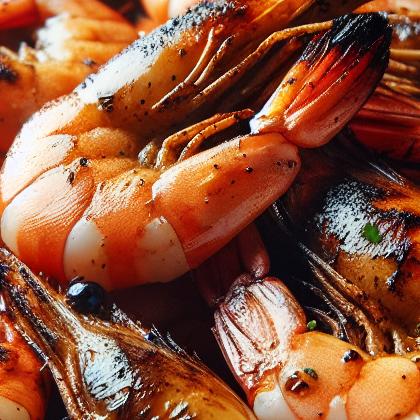Showing results for 'Cooked shrimp'
close
Cooked Shrimp

Prawn is a common name, used particularly in Britain and Commonwealth nations, for large swimming crustaceans or shrimp, especially those with commercial significance in the seafood industry. Shrimp that fall in this category often belong to the suborder Dendrobranchiata. In North America, the term is used less frequently, typically for freshwater shrimp.In the United Kingdom prawn is more common on menus than shrimp, while the opposite is the case in the United States. The term prawn also loosely describes any large shrimp, especially those that come 15 (or fewer) to the pound (such as king prawns or jumbo shrimp).
Cooked shrimp Pairs With:
Food Item
Flavor Affinity Level

Did you know there are 81 food flavor pairings in my database for Cooked Shrimp available. What you are seeing above is a random list of 30 items which pair with Cooked Shrimp.
For the entire list, beautifully formatted, enter your email address and click the download button below, then I'll email it to you as a PDF.
Cooked shrimp Properties:
| Food Property | Type | Description |
|---|---|---|
| Flavor Profile | Sweet | Minimal sweetness, mainly savory sea flavor |
| Sour | Slight tanginess, especially in marinades or sauces | |
| Salty | Naturally salty from the sea, can be enhanced with seasoning | |
| Umami | Rich umami taste, especially prominent in the shrimp's natural juices | |
| Texture | Firmness | Firm texture with a slight bounce, not mushy or overcooked |
| Tenderness | Tender and easy to bite through, not tough or chewy | |
| Moisture | Moist and succulent, with a juicy bite | |
| Nutritional Value | Macronutrients | High in protein and low in fat, good source of lean protein |
| Micronutrients | Contains essential minerals such as selenium, copper, and zinc | |
| Fiber | Minimal fiber content, primarily a protein source | |
| Color | Natural Pigments | Pinkish-white color with hints of orange when cooked |
| Aroma | Volatile Compounds | A strong seafood aroma, especially when freshly cooked |
| Chemical Composition | Water Activity (aw) | Moderate water activity, not overly dry or wet |
| Cooking Behavior | Heat Conductivity | Cooks quickly and evenly due to small size and surface area |
| Water Retention | Retains moisture well when cooked properly, not rubbery or dry |
Food Pairing App - Version 1.2.0
